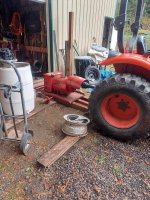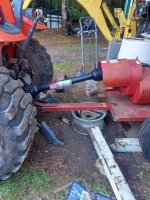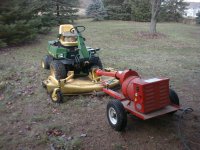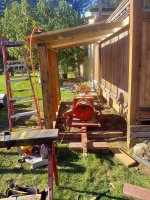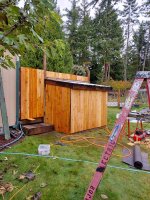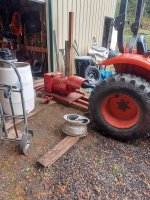Swblack1216
Silver Member
I finally got to test my PTO generator bought it, not knowing if it worked or not anyway took you gurus advice and bought the digital meter. I it seems to be working fine. My question is in one picture I have it running with the tires off, which puts it level and a straight line with my tractor, the other picture shows it with the tires on would that be bad to run it like that? Any advice is appreciated as always you guys are great TIA.
